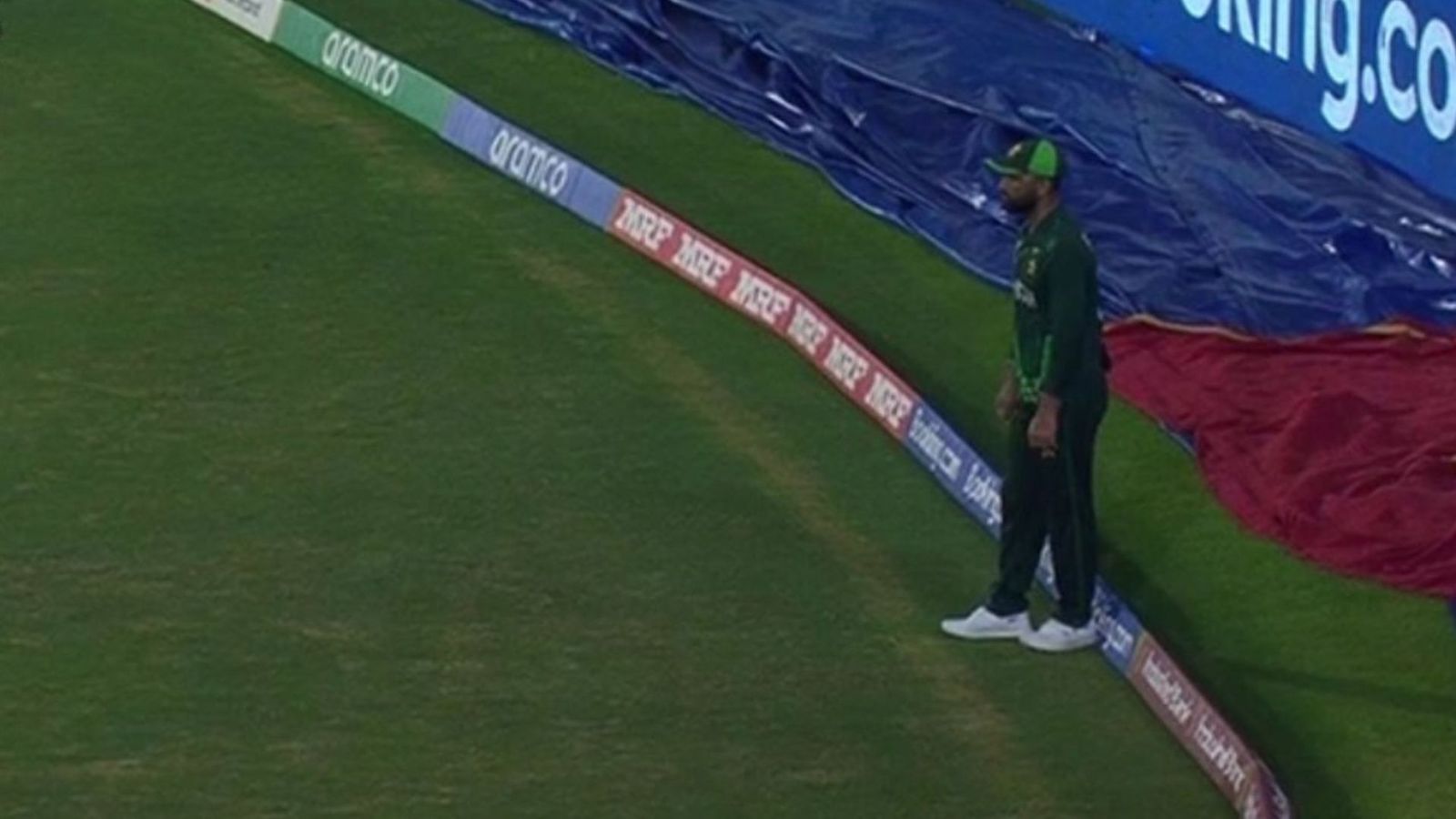Early on October 7 (Saturday), social media was abuzz with a rather controversial debate when a picture of a Pakistan fielder standing at the boundary ropes during the ODI World Cup match against the Netherlands went viral. In the picture, Fakhar Zaman was spotted standing just millimeters inside the boundary cushion but what caught the eyes of the viewers was that the boundary cushion was a couple of feet behind its actual position.
In the picture, it can be easily spotted that the boundary cushion was moved behind its actual position signified by the white line, and the fielder was standing behind the spot where the ropes ideally should have been in the first place.
The moment first came to light during the 21st over when Pakistan was fielding. It was observed that the boundary cushion was shifted nearly a foot from its designated position, marked by the white line. Such an oversight could have led to significant disputes, especially if a six was hit in that direction during this phase of the match.
Now the question that arises is whether the cushion was intentionally shifted or was it just an oversight and an accidental occurrence. Well, there is no clear-cut evidence to claim that a Pakistani fielder made a conscious attempt to push the boundary cushion a couple of feet behind. There is a strong possibility of the cushion being moved further away from its original spot while a fielder dived to save the ball going to the fence.
What does the law state?
According to the MCC's Boundary Laws, when a boundary marker, like the cushion in this instance, is moved or disturbed for any reason, Clause 19.3.2 dictates that it should be promptly returned to its original position. If a game is in progress, the adjustment should be made as soon as the ball is declared dead.
In the event that a Netherlands player hit the ball in the direction where the marker was displaced, and the ball landed between the official white line and the moved cushion, it would be awarded as a six. This is because, as per Clause 19.3.1, even if the boundary marker is disturbed, it's still deemed to be in its original location for scoring purposes.
MORE ON SPORTS TAK:
'He has a few technical faults': Aaron Finch's brutal take on India's likely replacement for Shubman Gill
Babar’s Pakistan struggles against determined Bas de Leede but starts World Cup campaign with comprehensive 81-run win


